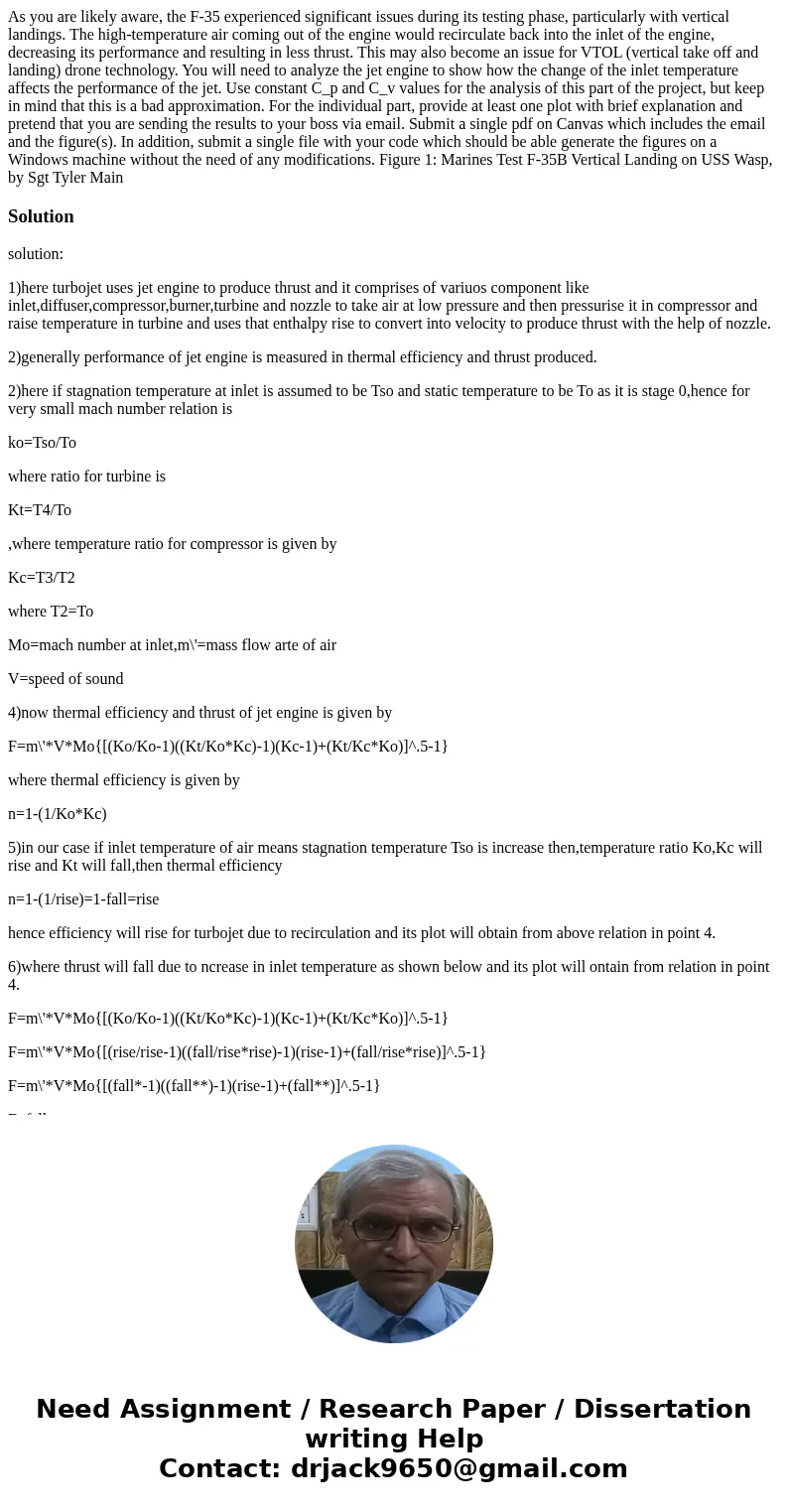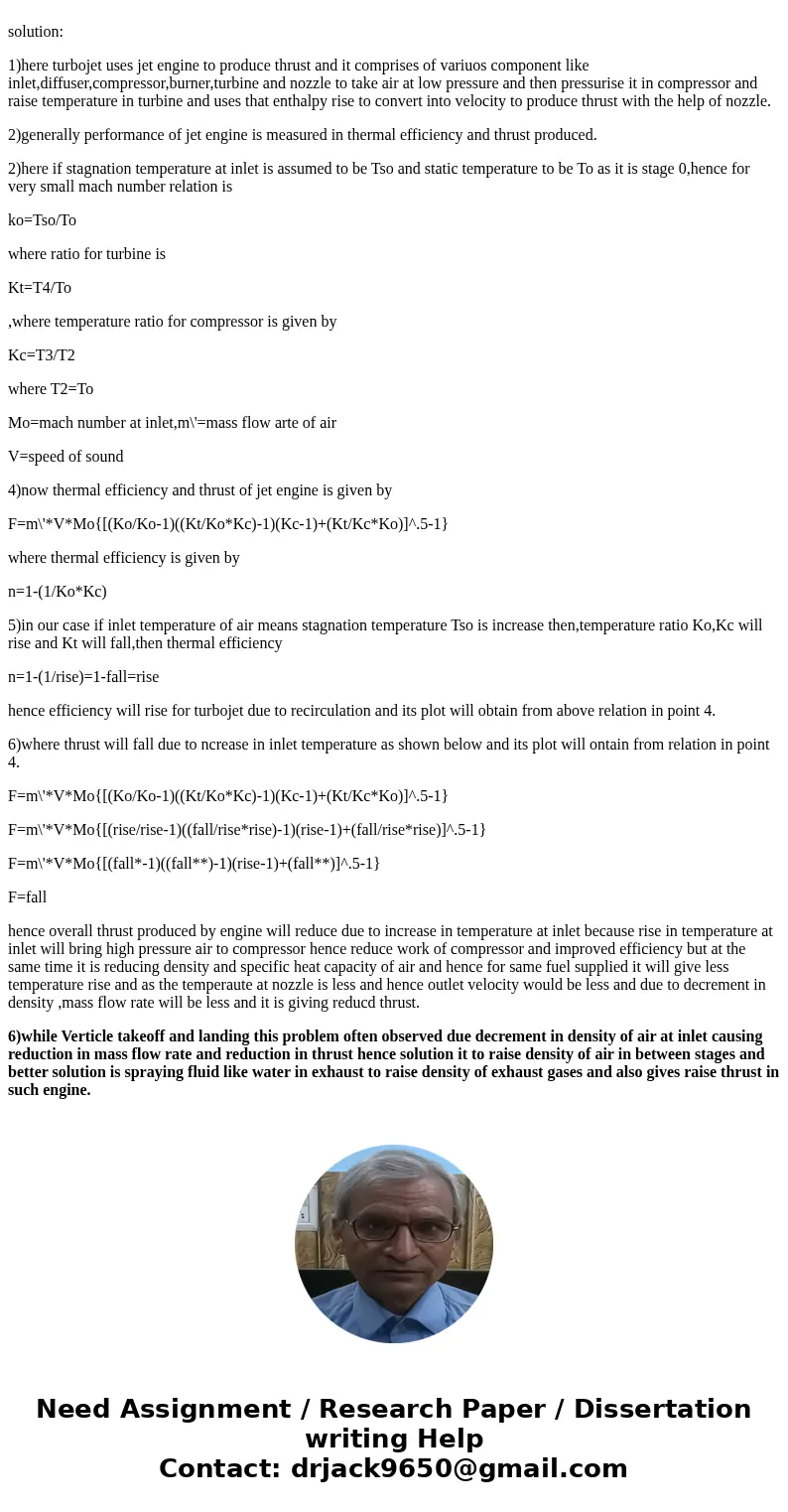As you are likely aware the F35 experienced significant issu
Solution
solution:
1)here turbojet uses jet engine to produce thrust and it comprises of variuos component like inlet,diffuser,compressor,burner,turbine and nozzle to take air at low pressure and then pressurise it in compressor and raise temperature in turbine and uses that enthalpy rise to convert into velocity to produce thrust with the help of nozzle.
2)generally performance of jet engine is measured in thermal efficiency and thrust produced.
2)here if stagnation temperature at inlet is assumed to be Tso and static temperature to be To as it is stage 0,hence for very small mach number relation is
ko=Tso/To
where ratio for turbine is
Kt=T4/To
,where temperature ratio for compressor is given by
Kc=T3/T2
where T2=To
Mo=mach number at inlet,m\'=mass flow arte of air
V=speed of sound
4)now thermal efficiency and thrust of jet engine is given by
F=m\'*V*Mo{[(Ko/Ko-1)((Kt/Ko*Kc)-1)(Kc-1)+(Kt/Kc*Ko)]^.5-1}
where thermal efficiency is given by
n=1-(1/Ko*Kc)
5)in our case if inlet temperature of air means stagnation temperature Tso is increase then,temperature ratio Ko,Kc will rise and Kt will fall,then thermal efficiency
n=1-(1/rise)=1-fall=rise
hence efficiency will rise for turbojet due to recirculation and its plot will obtain from above relation in point 4.
6)where thrust will fall due to ncrease in inlet temperature as shown below and its plot will ontain from relation in point 4.
F=m\'*V*Mo{[(Ko/Ko-1)((Kt/Ko*Kc)-1)(Kc-1)+(Kt/Kc*Ko)]^.5-1}
F=m\'*V*Mo{[(rise/rise-1)((fall/rise*rise)-1)(rise-1)+(fall/rise*rise)]^.5-1}
F=m\'*V*Mo{[(fall*-1)((fall**)-1)(rise-1)+(fall**)]^.5-1}
F=fall
hence overall thrust produced by engine will reduce due to increase in temperature at inlet because rise in temperature at inlet will bring high pressure air to compressor hence reduce work of compressor and improved efficiency but at the same time it is reducing density and specific heat capacity of air and hence for same fuel supplied it will give less temperature rise and as the temperaute at nozzle is less and hence outlet velocity would be less and due to decrement in density ,mass flow rate will be less and it is giving reducd thrust.
6)while Verticle takeoff and landing this problem often observed due decrement in density of air at inlet causing reduction in mass flow rate and reduction in thrust hence solution it to raise density of air in between stages and better solution is spraying fluid like water in exhaust to raise density of exhaust gases and also gives raise thrust in such engine.


 Homework Sourse
Homework Sourse